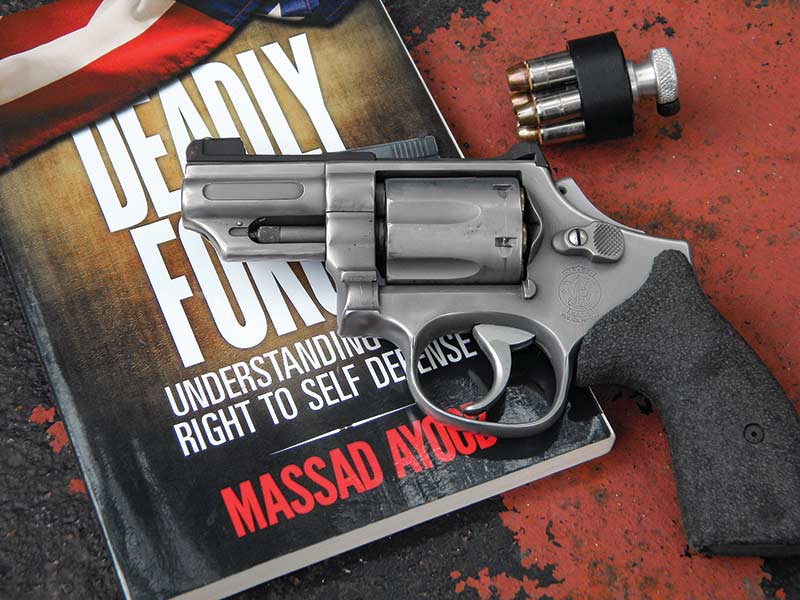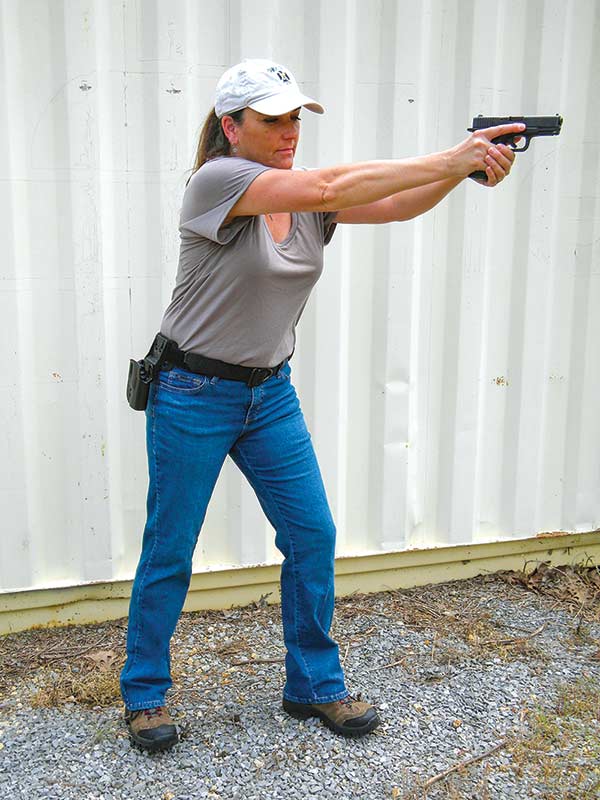Tactics and Training: Threat Response Fundamental Number 2: Communication
The fundamentals of the threat response are Move, Communicate, Use Cover, Shoot — as necessary — and Think. Moving is the first response to danger. Communication is number two on the list for numerous reasons, which often surprises people. And, like all other skills, communication must be practiced in advance, probably more than your shooting skills.
Vital, But Not Natural
Solving a dangerous problem — unless you’re completely alone — requires communication with others. Think car wreck, natural disaster and violent attack. You communicate with family or friends, coordinating actions with your team, whether armed or unarmed. “Go out that exit, now!”
It’s also beneficial to involve bystanders. “You, call 911 now!” In most situations, you should be issuing verbal commands to the threat(s). “Stop! Leave my house!” At some point, you’ll be conversing with law enforcement and lawyers.
Communication involves exchanging information. I talk to my dog. I communicate with my wife, Gretchen. Communication consumes a lot of our brain’s “random access memory,” making it difficult during high-stress situations. It’s not “natural.” Success requires practicing in advance. Use your “outside” voice; everyone experiences auditory exclusion during stress.
Threat Management
For coordinating actions with team members, I use “I.C.E.” — I inform my partner of what I need to do. “Moving right!” My partner confirms, “Move right!” Avoid using “no” and “go.” They sound too much alike, plus those words don’t confirm you understood what your partner said. After receiving confirmation, we’re on the same page. I have permission to execute that action.
Communicating with the threat(s) is about issuing verbal commands. You’re telling them what to do. Be guarded against engaging in a conversation. It’s just a ploy the threat uses to get you into a more vulnerable position. Keep the commands short, simple and precise. “Stop!” If time permits, follow up with additional instructions. “Leave now!”
Over 90% of our communication is nonverbal body language. Your physical actions, stance and movement must be “aggressive” enough to match the verbal commands. While issuing commands, you’re creating distance, moving to cover or an exit.
The sooner you begin issuing commands, the better. It may produce a “psychological stop.” You’re not the victim they anticipated. Over two million times a year, the presence of a firearm and verbal commands solve the problem without any shots fired. Plus, drawing attention to the threat establishes who they are and proves you’re doing everything possible to avoid conflict. If the threat doesn’t comply, it’s time to ramp up your response.
When do you draw the pistol? This question can’t be answered until that exact point in time. There are too many variables to factor in advance. Waiting until you’re 100% sure the pistol is needed will be too late, plus your commands carry a lot more weight when the pistol is in hand. The low-ready position, with arms, hands and weapon extended and muzzle low, is ideal for this. Safety Rule II is still in effect: Never point the muzzle at anything you’re unwilling or not ready to shoot. Regardless of what you do or when, at some point, you’ll have to explain the “why” behind your actions.
Post-Encounter
At some point, you’re communicating with responding law enforcement and eventually lawyers and such. Although the physical confrontation is done, this part of the confrontation is equally important. The best way to get a handle on these skills, and others, is to attend a class with Mas Ayoob. He’s the leading authority in the nation on the legal aspects of using lethal force.
Communication is a mandatory part of practice, like the rest of your defensive skills. Every time you rehearse drawing the pistol, you should be moving and issuing verbal commands to the threat. Some type of reactive target is good for this. Your subsequent actions, especially shooting, are based on how the threat reacts to the verbal commands. Once the threat is down or gone, you’re communicating with partners. “Threat down!” followed by additional information such as, “Moving right to the exit.”
There are exceptions to everything mentioned here. The exact details of the situation will dictate your response. The more prepared your defensive skills are, including communication, the better prepared you’ll be to deal with danger and just plain ol’ everyday life.







